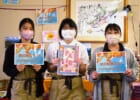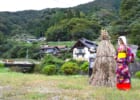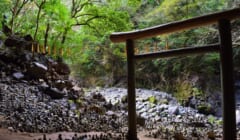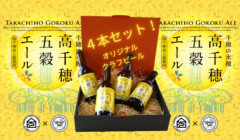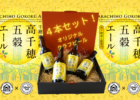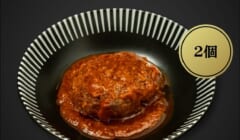
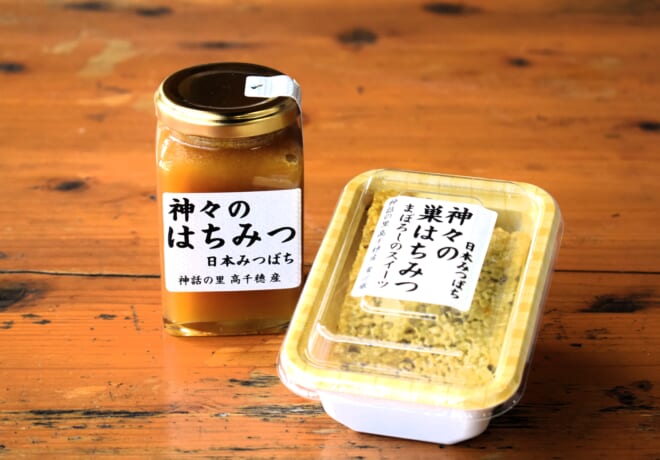
Takachiho Slow Life Vol. 2: The One in A hundred, Honey from Takachiho
- 0 お気に入り
- 877 view
- お気に入り登録

Takachiho is a town surrounded by mountains and rich in nature.
The lifestyle lived by the people who live with the richness of nature, is the very essence of a slow life.
They live in harmony with nature and in a carefully leisured pace. This month’s article introduces beekeeping, a way of life in Takachiho.
Visit beekeepers in Takachiho

We visited one of Takachiho’s beekeepers in the Iwato area, a 15-minute drive from the Takachiho town centre.
We meet Mr Takaharu Tomitaka of the Honey workshop called ‘Kaoru’ (はちみつ工房・薫).
Receiving the ‘One in a hundredth blessing’
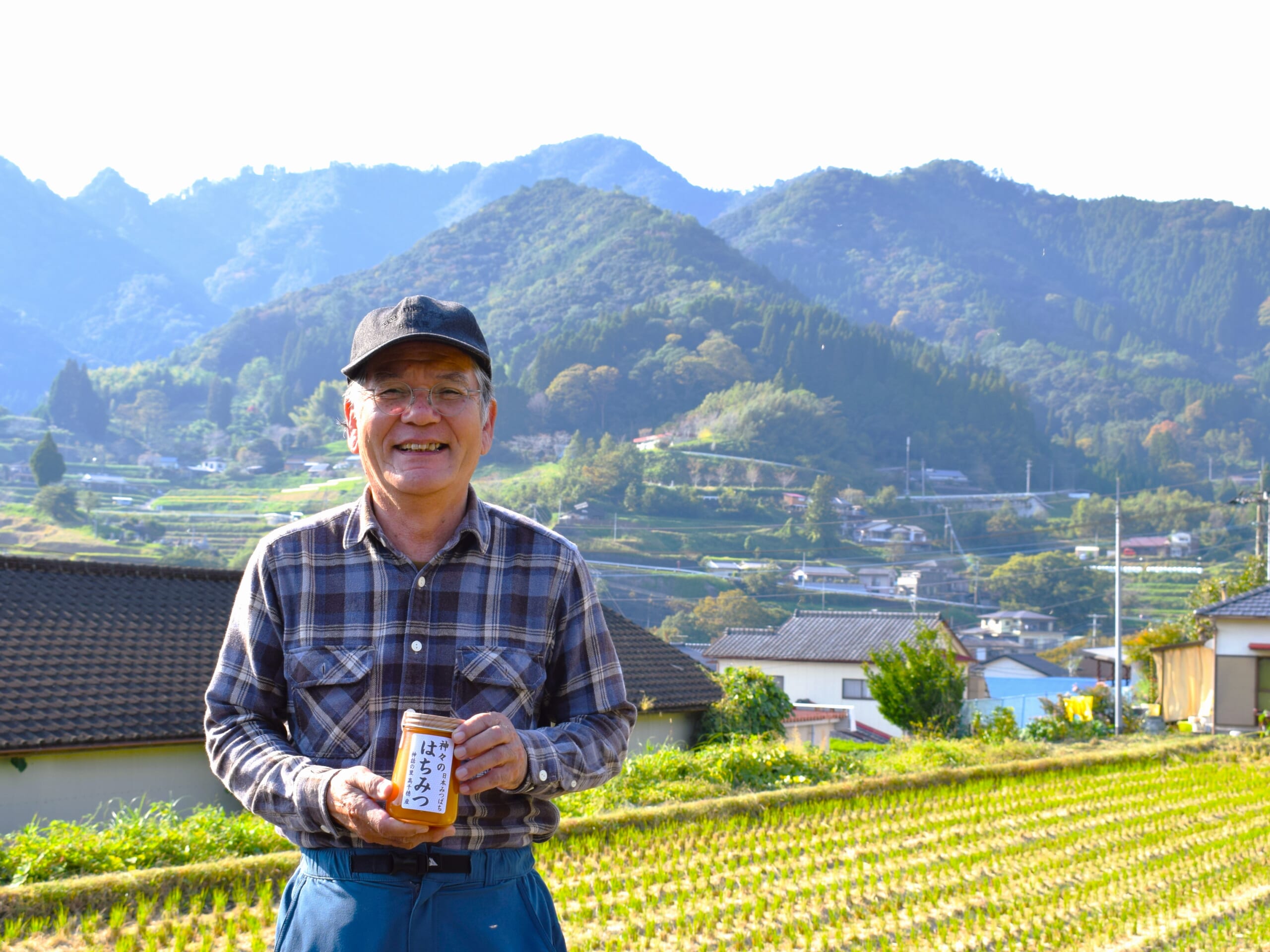
In Japan there are two types of honeybees: Western honeybees and Japanese honeybees, and our honey comes from the Japanese honeybees, which are an ancient Japanese species. The honey from Japanese honeybees accounts for less than 1% of the honey distributed in Japan,” says Tomitaka with a smile.
The bees are generally known as Western bees, which collect nectar from seasonal flowers from spring to summer.
In contrast, Japanese honeybees live in the mountains and prefer the nectar of broad-leaved tree flowers, so beekeeping is also carried out deep in the mountains.
“Every year, one to three queens bees are born, and they leave the hive with part of the population to build a new hive. Diving the population like this takes place only once a year, gradually increases the number of hives, and we are given a part of the hives honey.”
“Once the Japanese honeybees have built a hive, sometimes it results in them abandoning the hive if they don’t like it. When that happens, we have to wait for the next year,” says Tomitaka.
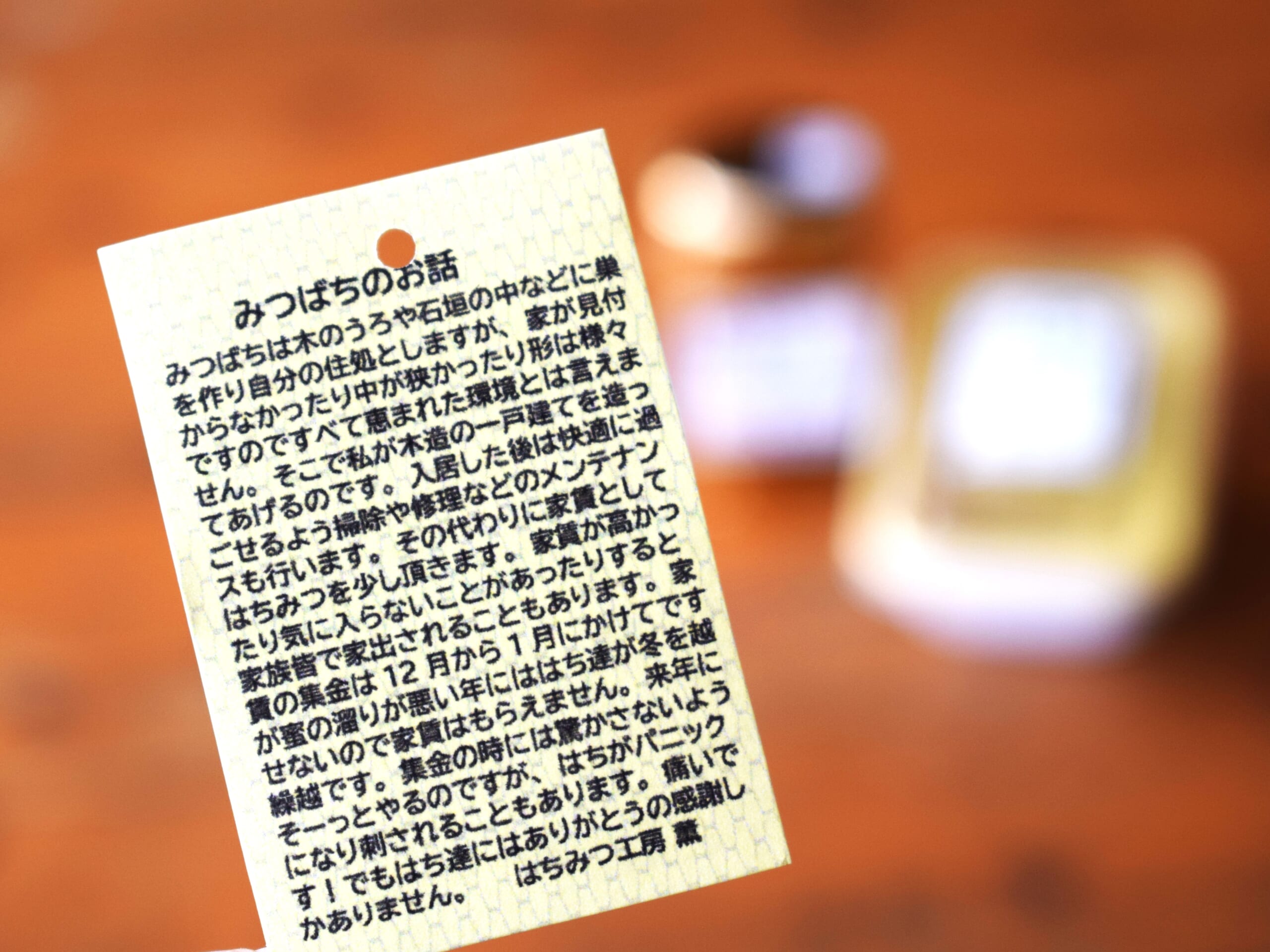
It is understandable that the amount of honey collected is limited and accounts for less than 1% of the total honey distribution in Japan.
“We should not go against the bees activities, but be close to them and share nature’s bounty with them, while being grateful. I feel as if I have been taught the origin of living with nature.”
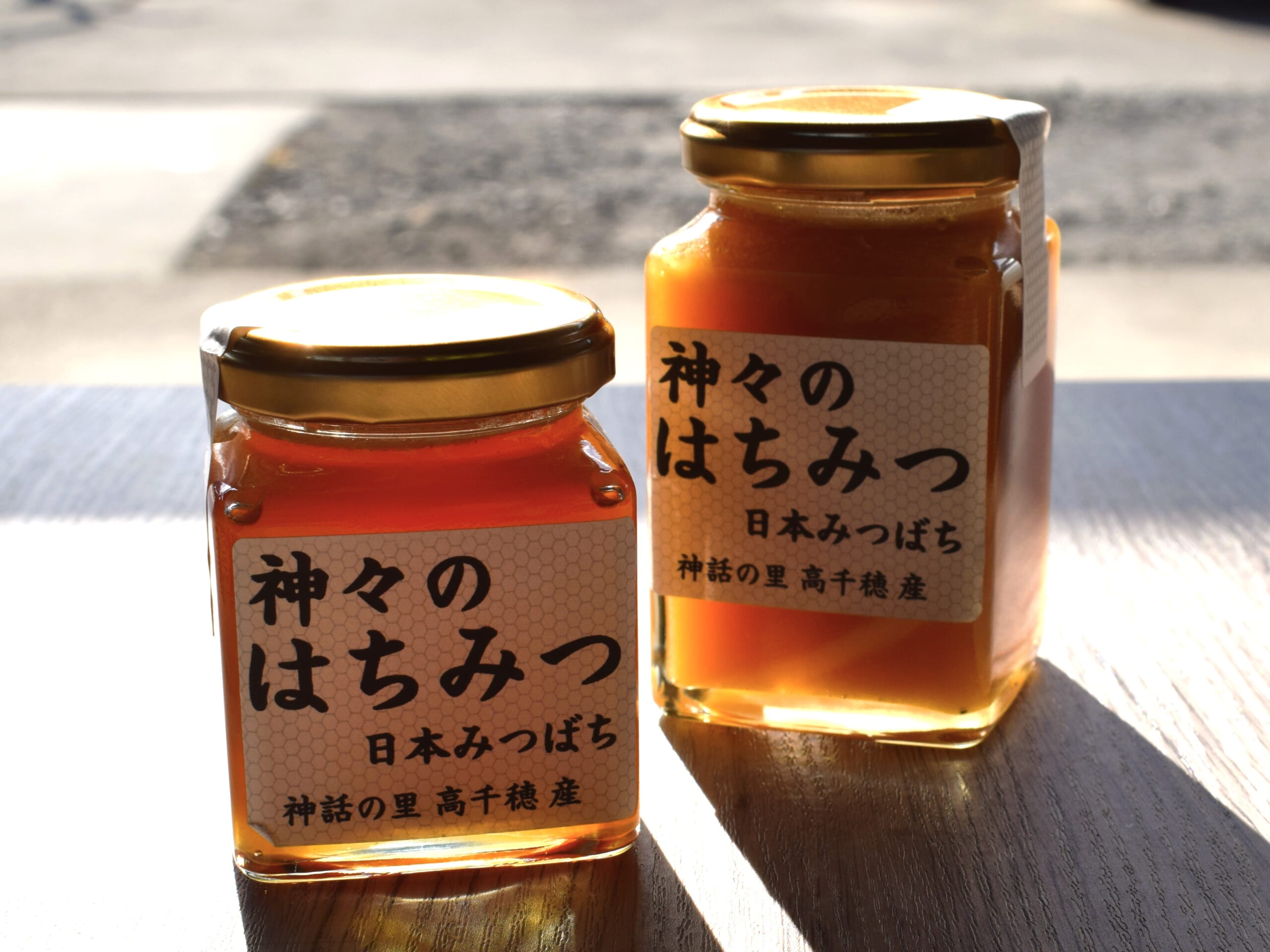
The most important characteristics of honey from Japanese honeybees is its richness and thickness.
“We take honey from December to January. The bees store the honey they collect from spring to early autumn for the winter when there is no more food, and they work hard inside the hive to dry it out by shaking their wings to remove the moisture. So by the time winter comes, the honey is matured and thick,” Tomitaka tells us.
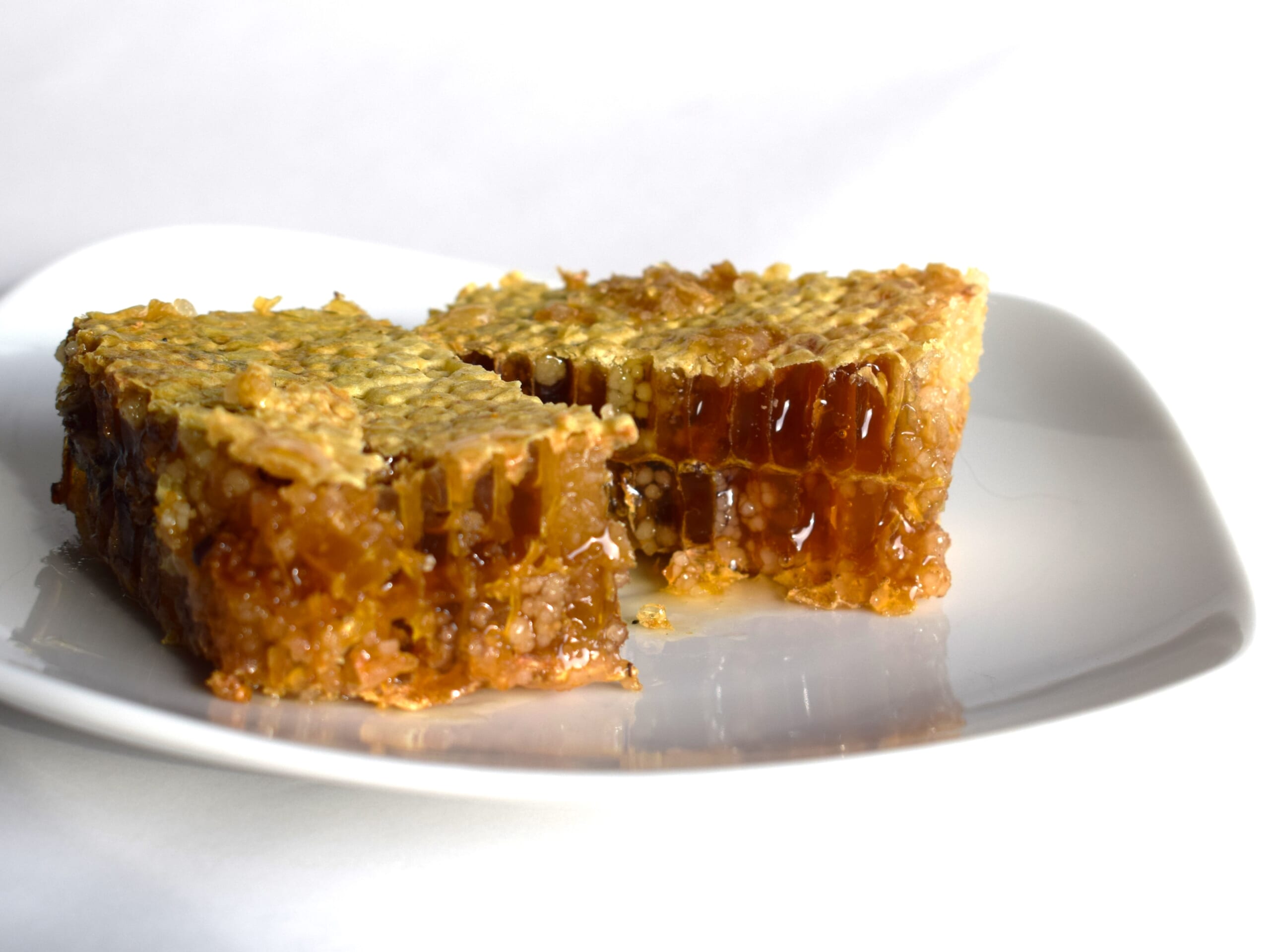
Tomitaka calls it ‘real honey’ because it is ‘hive honey’, which is taken straight from the hive.
He calls it ‘hive honey’ because it is in its original state, with no human intervention at all.
The honey melts at room temperature and flows out when cut the comb is cut.
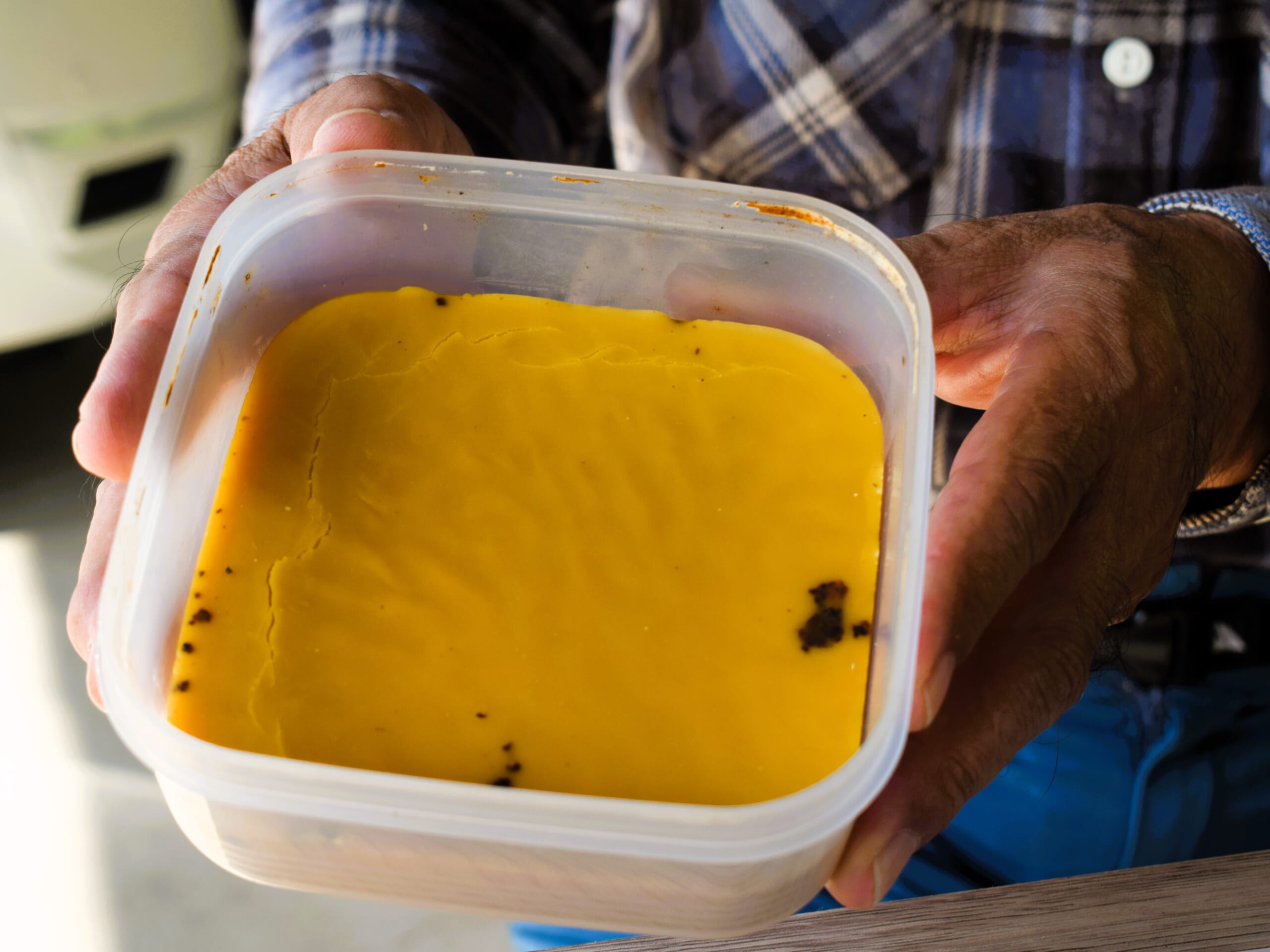
The hives after the honey has been collected and after the bees have gone is also used down to the last bit of the hive.
“The hive is made from the wax that the bees produce from their bodies. Because it is wax, it melts at about 60 degrees Celsius. I enjoy woodworking, so I blend the wax with linseed oil and use it as a wax for the crafts”, says Tomitaka.
He let us touch his homemade beeswax, saying, “It’s a 100% natural, so it’s good for people and the environment. It also have a slightly sweet smell.”
Honey and insect-eating culture in Takachiho
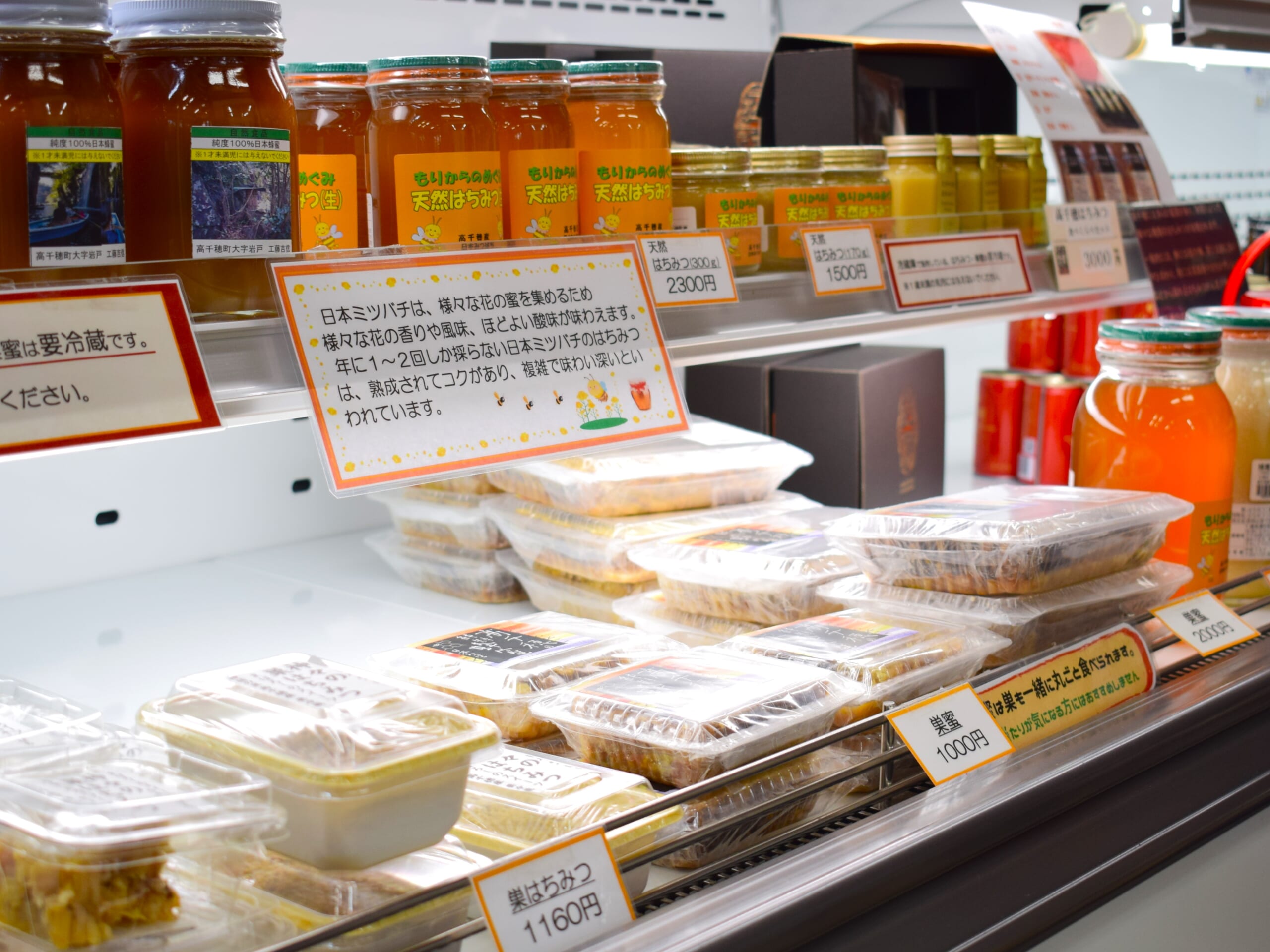
There are several beekeepers in Takachiho, and honey and hive honey from Japanese honeybees collected in Takachiho can be purchased at Michi-no-Eki Takachiho and Kihachi-no-Kura in the Gamadase Market as well as at direct sales outlets.
★Click here for directions to Michi-no-Eki Takachiho
★Click here for directions to Kihachi-no-Kura
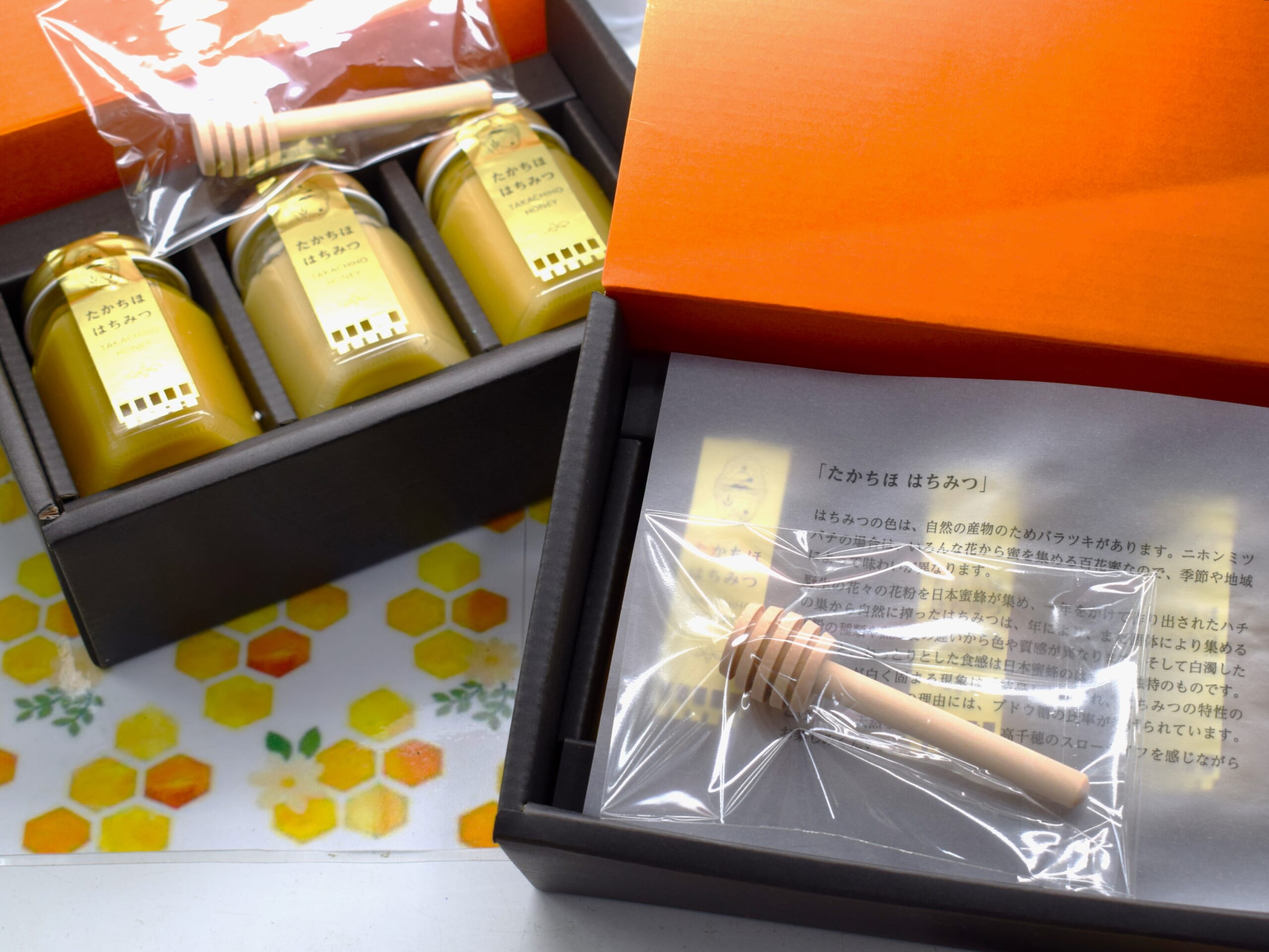
The raw material for honey is nectar, and it varies depending on where the beekeeper collects it.
This means that each of them have a different taste! For those who are interested and want to try it, a ‘tasting set’ has been created.
This is a tasting set that includes three kinds of honey from three beekeepers: Tomitaka (whom we interviewed), Korogi from the Mitai area and Mr Sakamoto from the Iwato area. It comes in a box with a honey dipper and is recommended as a souvenir or gift.
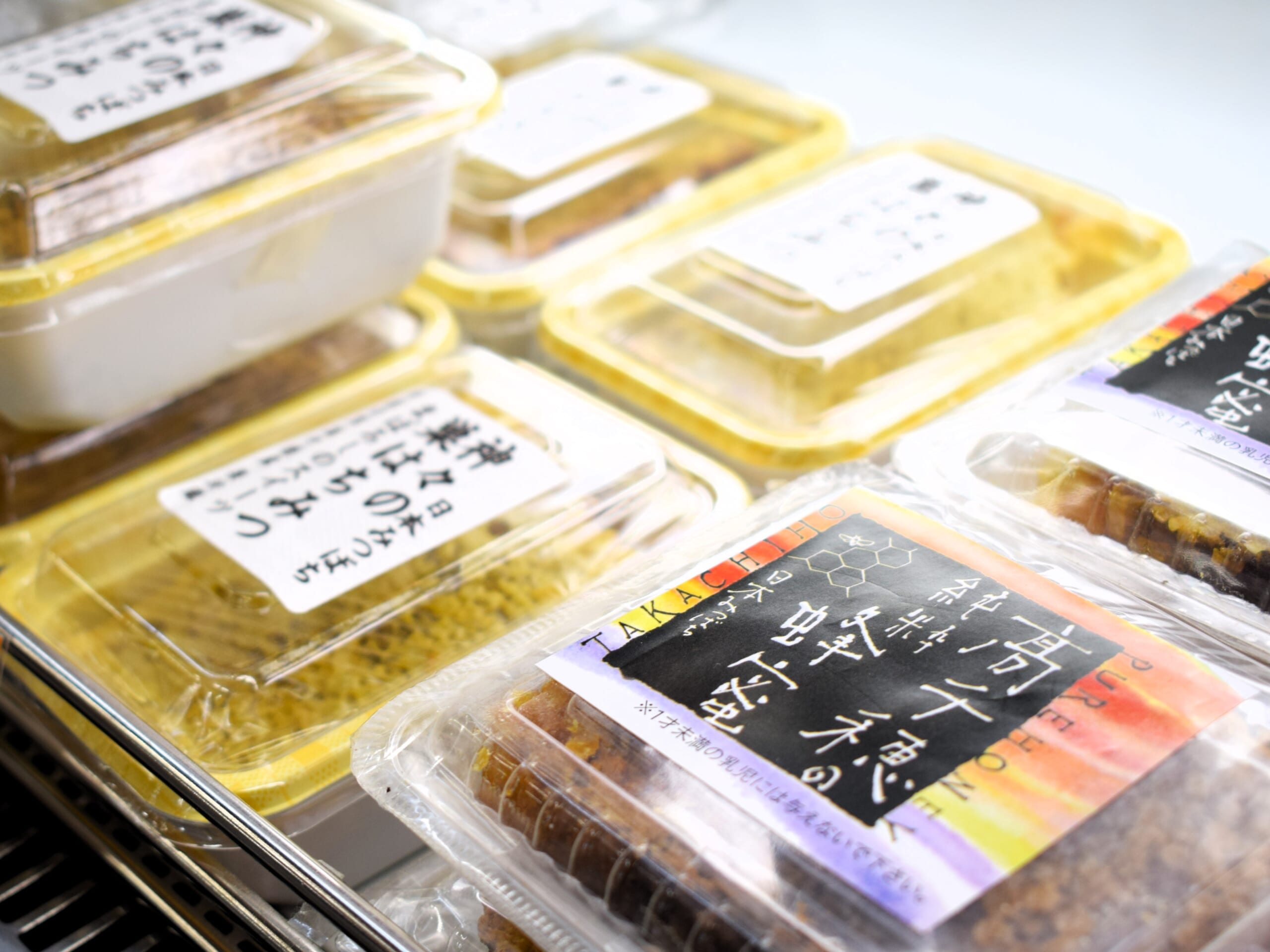
Hive honey, known as honeycomb, is secretly booming. It is said to be highly effective in relieving fatigue, nourishing the body, preventing arteriosclerosis and for enhancing beauty.
It is expensive because of the limited amount produced, but in Takachiho it can be purchased in small quantities at Michi-no-Eki Takachiho and at Kihachi-no-Kura in the Gamadase market.
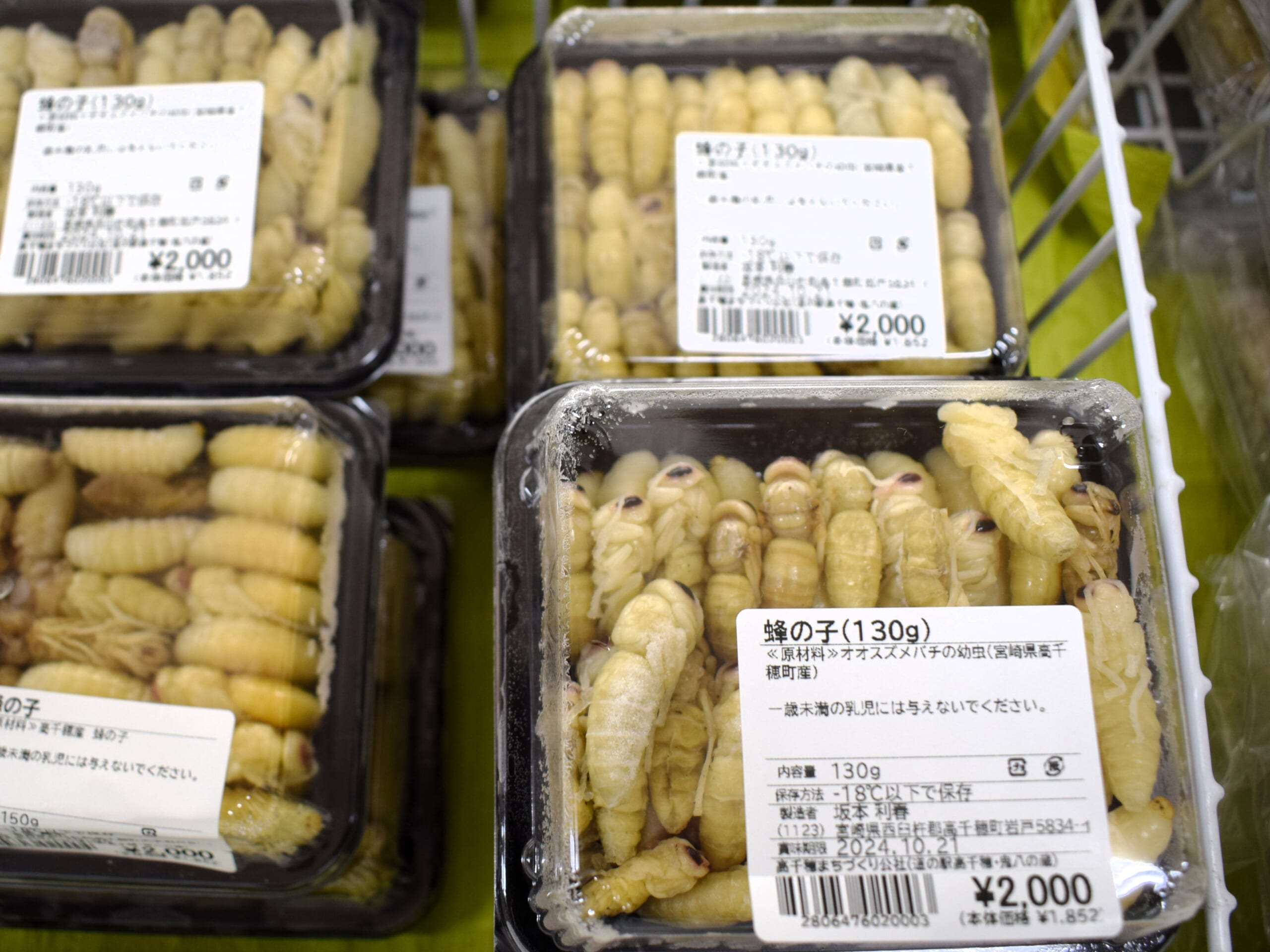
Insect eating has recently started booming, but bee larvae have been eaten in Takachiho for centuries. These are not honeybee larvae, but the larvae of the giant hornet. They are the natural enemy of honeybees and have been eaten after they have been exterminated.
Bee larvae is a superfood that relieves fatigue, invigorates the brain, nourish the body and boosts immunity, as well as having a fat-burning effect!
According to a local who came to buy bee larva at the Kihachi-no-Kura, they are delicious when boiled.
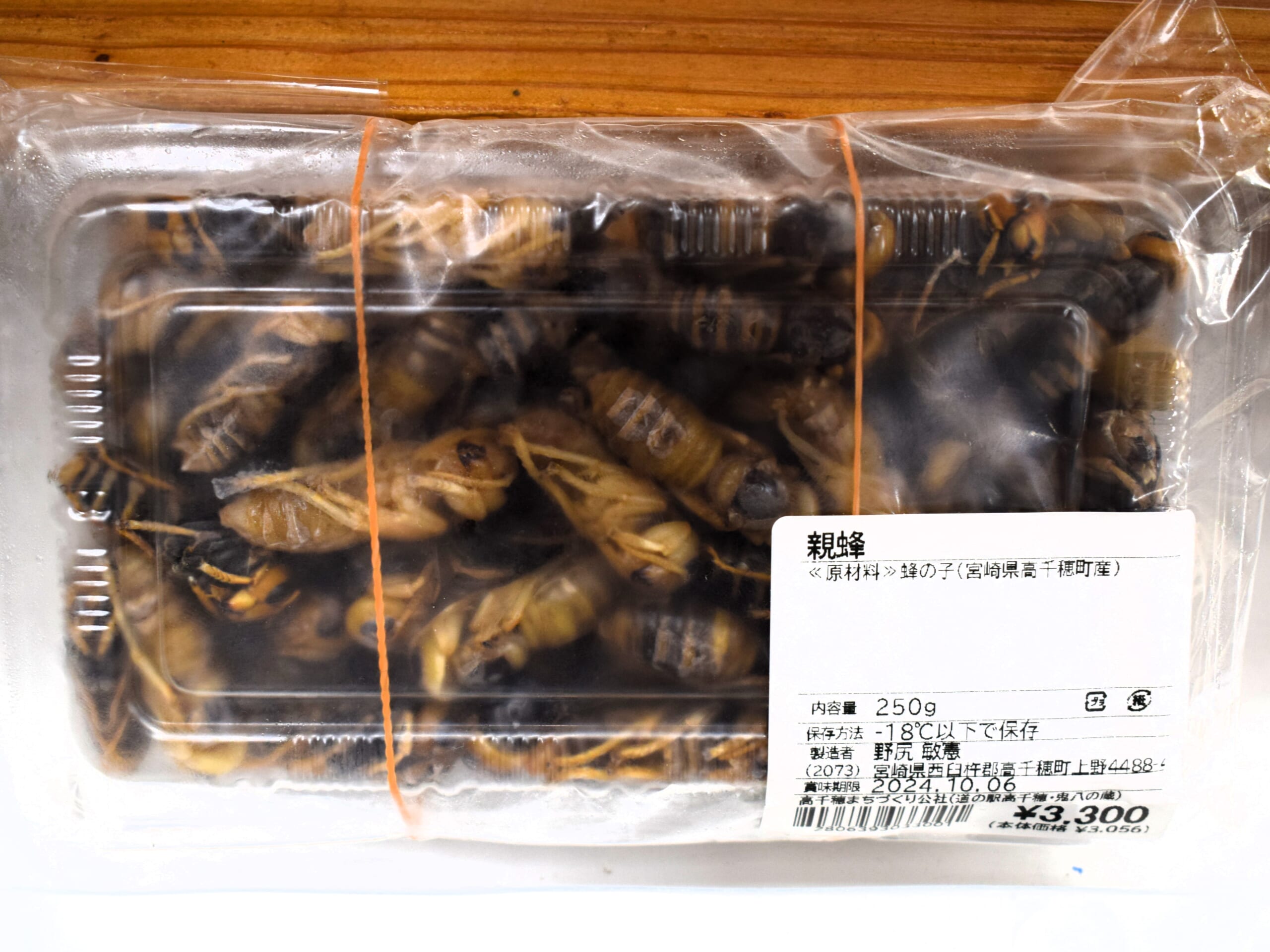
Not only larvae, but also the parent bees of the giant hornet were lined up for food. These bees, are bees to behold!
A young staff member at Kihachi-no-Kura told us that they are delicious fried. It is something that has been eaten in Takachiho for a long time and is very familiar to the locals.
Conclusion
What did you think of the introduction to beekeeping in Takachiho?
Honey, hive honey and bee larvae can be purchased at the Michi-no-Eki Takachiho and Kihachi-no-Kura in the Gamadase Market in Takachiho, but it is a precious commodity. You are very lucky if you come across them, as they are only available when – and for as long as they are collected.
Honey is also used in the hometown tax system from Takachiho. You can apply for it from sites such as Furusato Choice and Rakuten, just search for “Takachiho”.
Please try it!
★Click here for Takachiho hometown tax system (furusato choise)
★Click here for Takachiho hometown tax system(Rakuten)
 関連の記事
関連の記事
 コンシェルジュからのおすすめ
コンシェルジュからのおすすめ
お客様のご要望に沿ったおすすめの観光情報・宿(ホテル 旅館)・レストラン・居酒屋・カフェ・ショップ等をコンシェルジュスタッフが厳選してご紹介しております。





